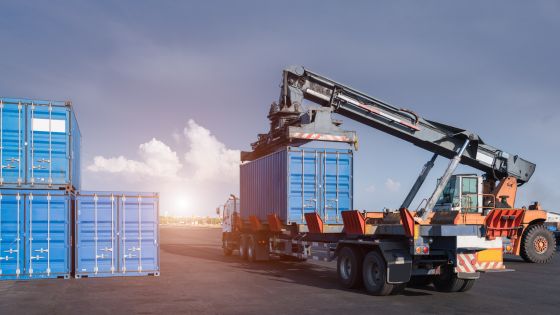Efficient cargo handling is crucial for logistics companies, ports, and airports to ensure smooth operations and timely delivery of goods. Minimizing turnaround time is a key objective in cargo handling, as it directly impacts productivity, customer satisfaction, and overall profitability. In this blog post, we will explore various techniques and strategies that can help streamline cargo handling processes, reduce delays, and maximize efficiency.


The Importance of Minimizing Turnaround Time
Turnaround time refers to the time it takes for cargo to be unloaded from a vessel, processed, and transferred to the next mode of transportation or storage facility. Minimizing turnaround time offers several significant benefits:
- Increased Productivity: Shorter turnaround times allow for more efficient use of resources, reducing idle time for personnel and equipment, and increasing overall productivity.
- Improved Customer Satisfaction: Faster cargo handling translates to quicker delivery times, meeting customer expectations and enhancing satisfaction levels.
- Reduced Costs: By minimizing turnaround time, companies can optimize their operations and reduce associated costs such as demurrage fees, storage expenses, and labor costs.
- Enhanced Capacity: Streamlining cargo handling processes enables companies to handle larger volumes of goods, increasing their capacity to meet growing demands.
Leveraging Railcar Positioners for Efficient Cargo Handling
Railcar positioners are an advanced technological solution that can significantly minimize turnaround time. These machines are designed to quickly and safely position railcars for loading or unloading.
With railcar positioners, there’s no need for shunting locomotives, eliminating the time-consuming and labor-intensive process of manual positioning. This dramatically reduces the time taken to position railcars, thereby increasing the productivity of cargo handling operations.
Moreover, railcar positioners are highly versatile and can accommodate various railcar sizes, making them a flexible solution for cargo handling needs. They are also designed with safety in mind, reducing the risk of accidents during railcar movement.
By integrating railcar positioners into cargo handling processes, logistics companies, ports, and airports can achieve faster, safer, and more efficient operations, ultimately minimizing turnaround time and enhancing overall performance.
Techniques for Minimizing Turnaround Time
Now, let’s explore some effective techniques that can help minimize turnaround time and improve cargo handling efficiency:
- Optimized Workflow: Analyze and redesign cargo handling workflows to eliminate bottlenecks, redundancies, and unnecessary steps. Streamlining the workflow ensures smoother operations and faster cargo processing.
- Automation and Technology: Embrace automation and technology solutions such as robotics, barcode scanning, and RFID tagging to accelerate cargo handling processes and improve accuracy. Automated systems can reduce manual labor, minimize errors, and enhance overall efficiency.
- Efficient Yard Management: Implement efficient yard management systems to optimize the storage, movement, and retrieval of cargo within the facility. Utilize real-time data and advanced tracking technologies to locate and retrieve containers quickly.
- Effective Equipment Utilization: Optimize equipment utilization by strategically positioning handling equipment, minimizing travel distances, and employing efficient loading and unloading techniques. This reduces idle time and speeds up cargo handling operations.
- Collaboration and Communication: Foster strong communication and collaboration among all stakeholders involved in cargo handling, including shipping lines, port authorities, terminal operators, and trucking companies. Effective coordination ensures timely exchange of information, reducing waiting times and improving overall efficiency.
- Preventive Maintenance: Regular maintenance and inspection of handling equipment, such as cranes, forklifts, and conveyors, is essential to prevent breakdowns and unplanned downtime. Implementing a preventive maintenance program helps minimize delays caused by equipment failures.
- Data Analytics and Predictive Modeling: Utilize data analytics and predictive modeling techniques to forecast cargo volumes, anticipate demand fluctuations, and optimize resource allocation. Data-driven insights enable proactive decision-making and efficient planning.
- Employee Training and Skill Development: Provide comprehensive training programs to equip employees with the necessary knowledge and skills for efficient cargo handling. Well-trained personnel can perform tasks more effectively, minimizing errors and speeding up operations.
Continuous Improvement and Performance Monitoring
To ensure sustained efficiency, it is crucial to continuously monitor performance, collect data, and identify areas for improvement. Key performance indicators (KPIs) such as average turnaround time, productivity, and error rates can provide valuable insights into operational efficiency. Regular evaluation and analysis allow for targeted improvements and ongoing optimization of cargo handling processes.
Efficient cargo handling is essential for logistics operations to meet customer demands, increase productivity, and reduce costs. Minimizing turnaround time through optimized workflows, automation, efficient equipment utilization, and effective communication can significantly enhance operational efficiency.
Continuous improvement and monitoring ensure sustained performance and keep logistics companies competitive in a dynamic industry. Organizations can streamline their cargo-handling processes by implementing these techniques and strategies, minimize delays, and maximize efficiency.























